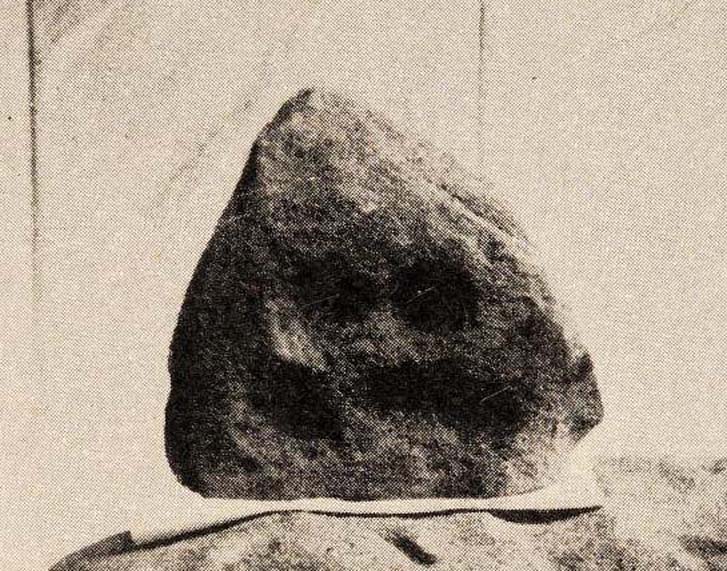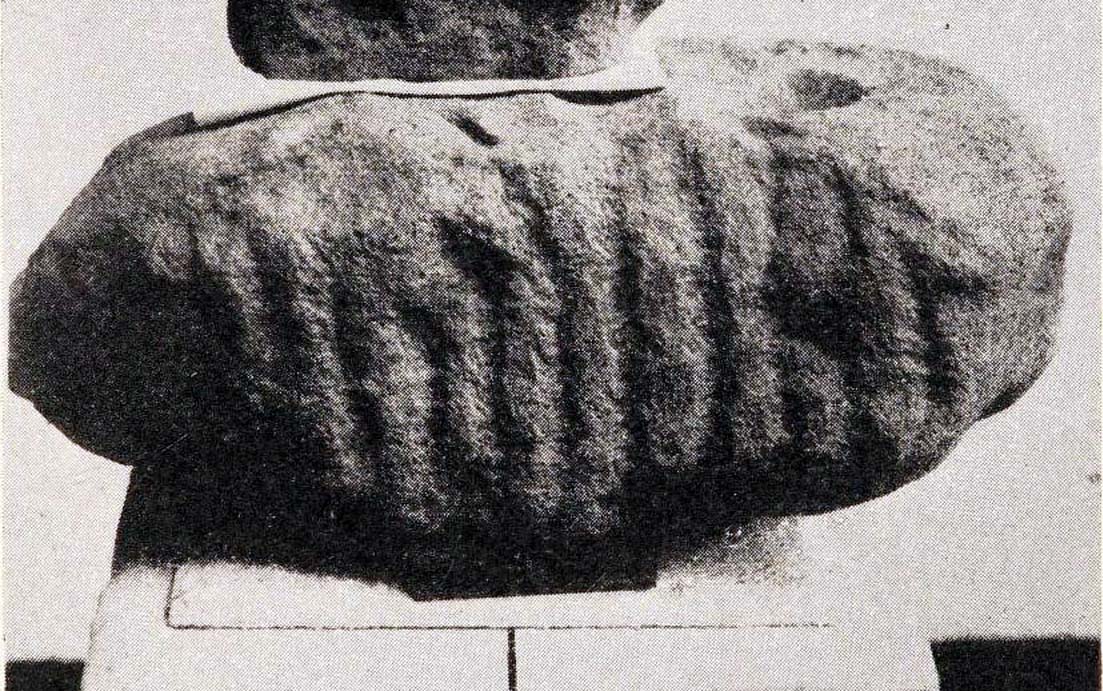Cup-Marked Stone: OS Grid Reference – NZ 75398 19218
Also Known as:
- BOU-5 (Brown & Chappell)
Archaeology & History

Inside the once prominent prehistoric tomb on the Cow Keeper’s Field, the northern antiquarians William Hornsby and John Laverick (1920) came across two small petroglyphs in association with a cremation burial, several feet south of the central cist: the Cow Keeper’s Field 2 carving, plus this small, triangular-shaped stone, 8in by 6in, consisting of five standard cup-marks, with two of the cups (as the photo shows) connected to each other. It is akin to the numerous ‘portable’ cup-marked stones which, in other cultures, were deposited onto cairns in remembrance of the ancestral spirits of the tomb. Such widespread practices may also have occurred here. Petroglyph researcher and writer Graeme Chappell (2017) informed us that the carving “is in storage in the Dorman museum in Middlesborough.”
References:
- Brown, Paul & Chappell, Graeme, Prehistoric Rock Art in the North York Moors, Tempus: Stroud 2005.
- Chappell, Graeme, Personal communication, October 4, 2017.
- Crawford, G.M., Bronze Age Burial Mounds in Cleveland, Cleveland County Council 1990.
- Elgee, Frank, Early Man in North-East Yorkshire, John Bellows: Gloucester 1930.
- Hornsby, William & Laverick, John D., “British Barrows round Boulby,” in Yorkshire Archaeological Journal, volume 25, 1920.
© Paul Bennett, The Northern Antiquarian
